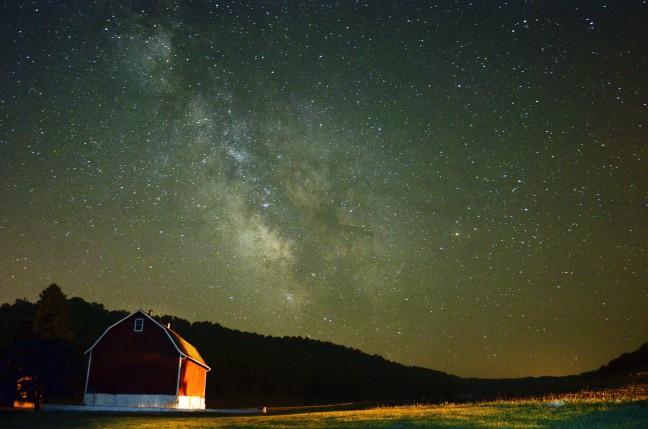The Milky Way Galaxy, which is 100,000 light years across and scattered with more than 300 billion stars, has been reduced to a single 360-degree image by a team of University of Wisconsin researchers.
Using NASA’s infrared Spitzer Space Telescope, the team has compiled 2.5 million images over the past decade to create a vivid panorama of the galaxy known as GLIMPSE360, currently being displayed at the Wisconsin Institutes for Discovery.
The telescope, launched into earth’s orbit in 2003, has been used by scientists across the nation for a range of studies. But the intergalactic discoveries made by members of the UW project known as Galactic Legacy Infrared Midplane Survey Extraordinaire are unparalleled by any of the five other universities using information from the satellite, Edward Churchwell, a UW professor and lead researcher on the GLIMPSE team, said. The discoveries made by the UW team have been used in more than 650 research papers.
Because the galaxy is in the shape of a pinwheel, it is impossible to view stars further than a couple thousand light years away in visual light waves, Churchwell said.
“It’s like being in the middle of a forest and trying to figure out the shape and the boundaries of the forest, but there are thousands of trees in the way inhibiting your view,” he said. “In the infrared, the galaxy becomes pretty much transparent, so we can see almost right through the galaxy.”
Using infrared imagers, researchers are able to cut through these clouds of interstellar dust. They bring millions of never-before seen stars, stellar nurseries and nebulae at the farthest reaches of our galaxy into full view and allow for a more complete understanding of the Milky Way’s structure, Bob Benjamin, a UW professor whose main responsibility on the GLIMPSE team is to use data from the telescope to understand galactic structure, said.
In addition to the discovery of more than 200 million new stars, the team discovered the galaxy is filled with polycyclic aromatic hydrocarbons, which are high-energy gas molecules, found inside substances such as gasoline and oil here on earth.
“One finding that I was completely blown away with was that the disk of our galaxy has a lot of polycyclic, aromatic hydrocarbons – gas molecules out in space. Our galaxy is actually full of energy,” Churchwell said.
The new images also provide conclusive evidence of a dense bar of stars that is present at the center of our galaxy and spreads more than 12,000 light years from the center of the Milky Way in either direction, coming relatively close to the sun, Churchwell said.
Previously, there was much speculation on the existence of this bar, but in the infrared, it “sticks out like a sore thumb,” he said.
With millions of pieces of data to comb through, the team put the data online where thousands of volunteers helped to look through images, identifying points of interest for researchers to further analyze.
Although the discoveries unveiled by the GLIMPSE team answer many questions, they also raise new questions regarding the inner workings of the galaxy, questions that will have to be taken up by future generations of scientists, Churchwell said.
This article has been updated for accuracy and clarification.


